How To Draw The State Of Texas

J. De Cordova's Map of the State of Texas…
![]()
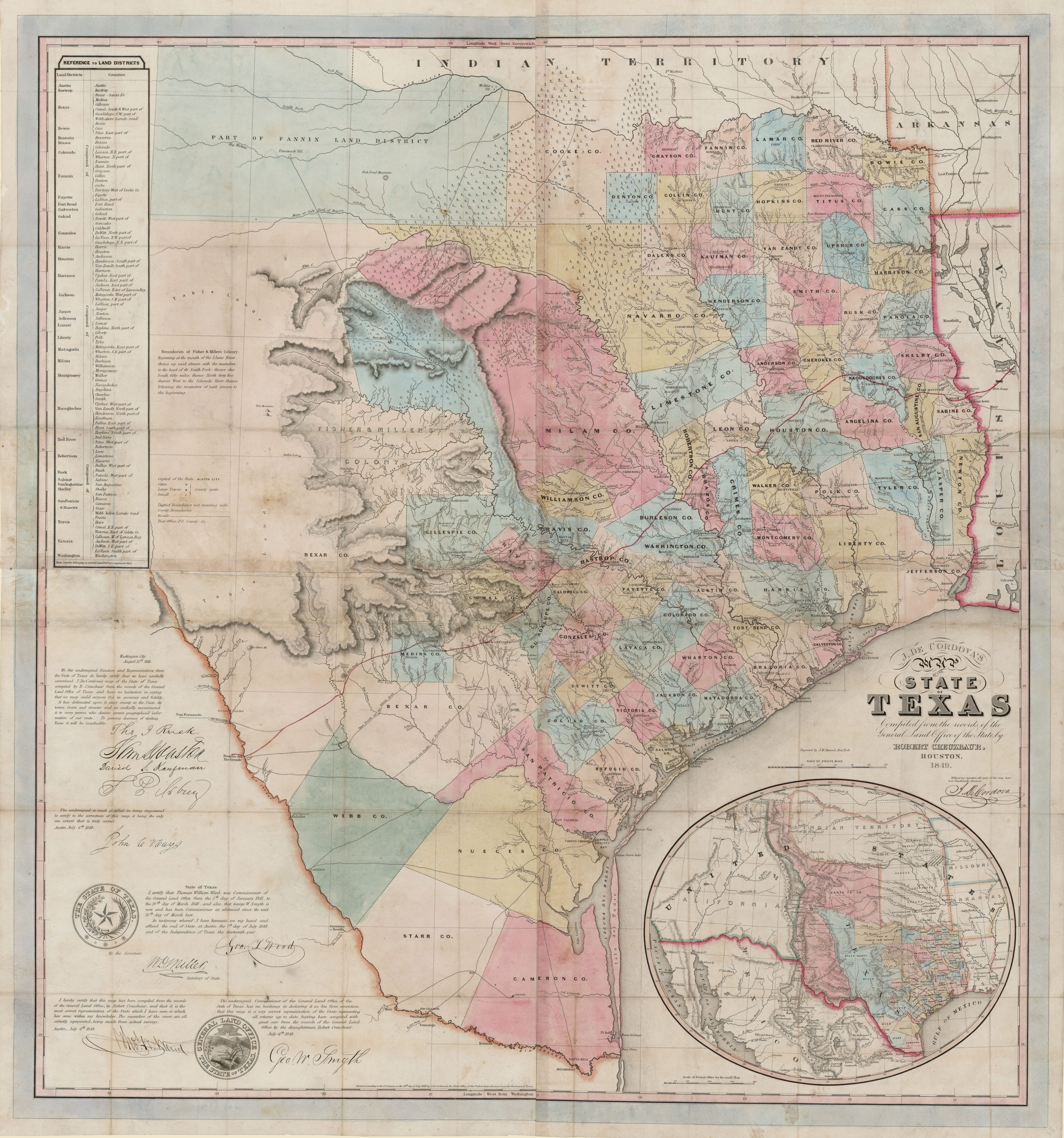
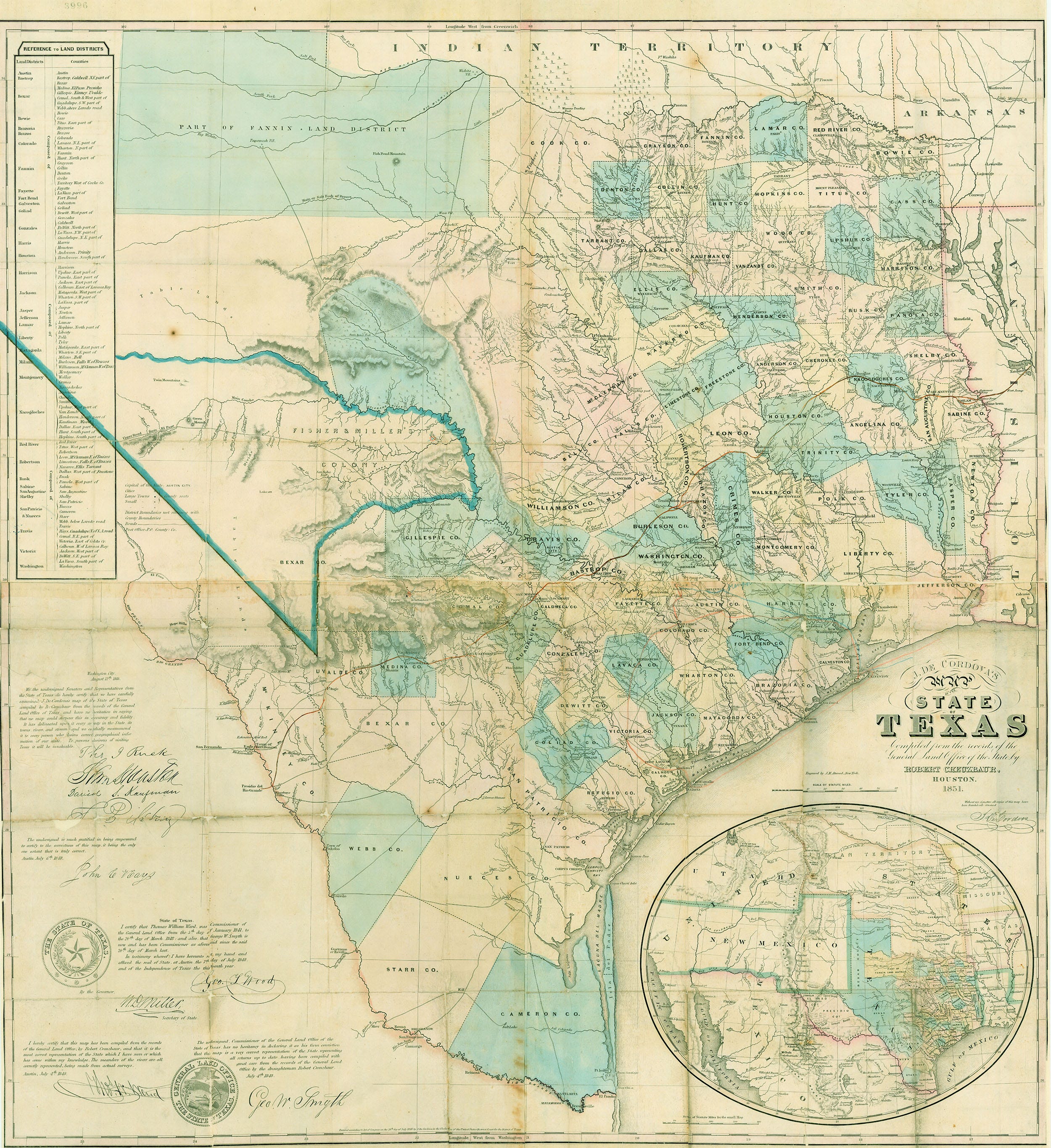
Other than Stephen F. Austin, Jacob De Cordova is perhaps the most recognized name in Texas cartography. His maps set the standard for Texas mapping upon introduction, as they were compiled from the records of the Texas General Land Office. De Cordova's original 1849 map, produced with noted cartographer Robert Creuzbaur, was considered the most accurate map of Texas at the time. It was the first large-scale map of Texas based on cadastral surveys and was revised several times until De Cordova sold the publishing rights to famous American publisher J.H. Colton in 1861.[1]

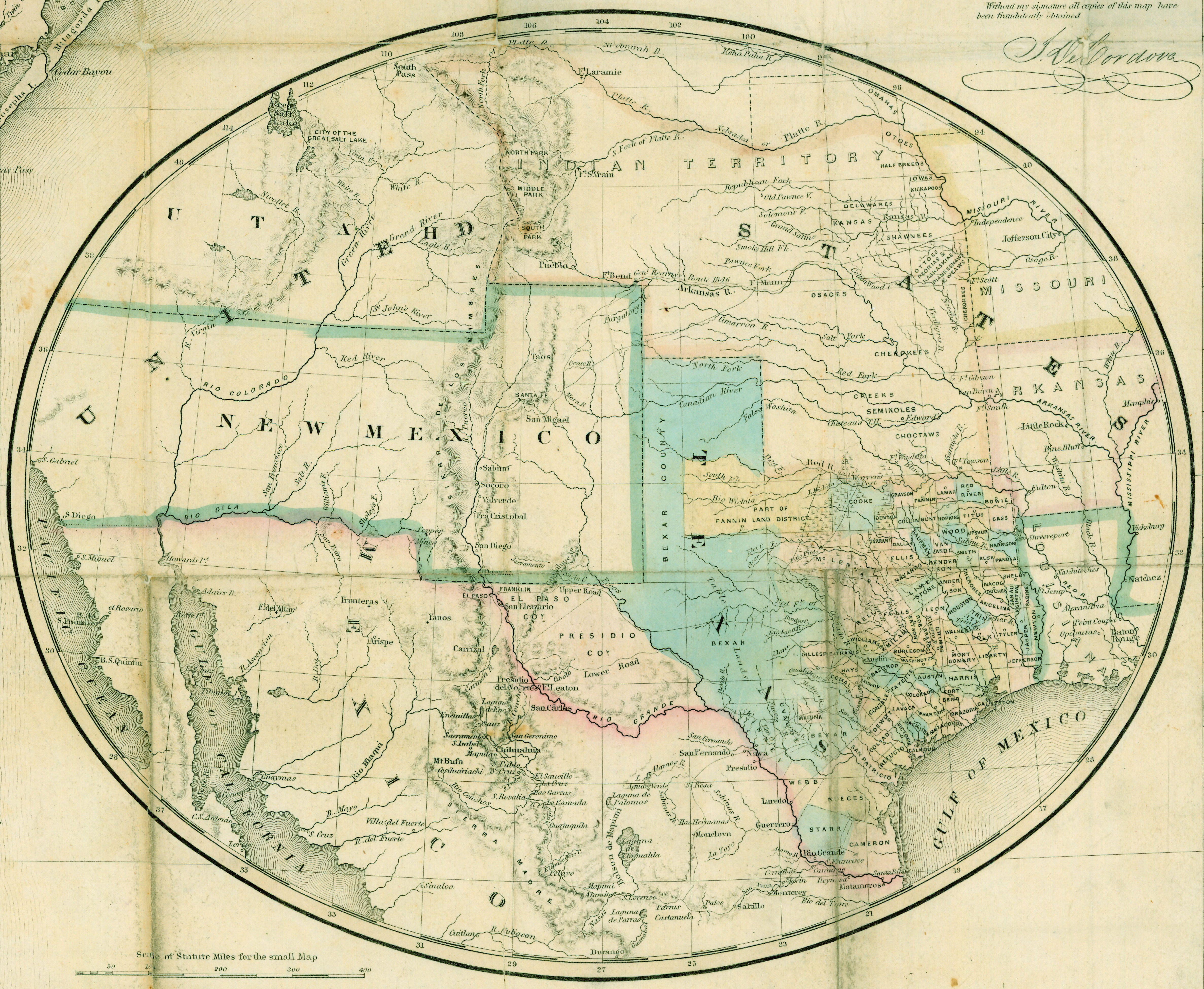
Though similar, the 1849 and 1851 editions of De Cordova's Map of the State of Texas have one major difference — the inset. The 1849 edition features Texas at its largest extent, the panhandle extending north through present-day Colorado to Wyoming. To the west, Texas encompasses parts of present-day New Mexico. In the 1851 edition, the inset shows a drastically different Texas. The Compromise of 1850 cut the northernmost boundary to the 36˚ 30' parallel, and the western boundary with New Mexico was established in its familiar shape.[2]
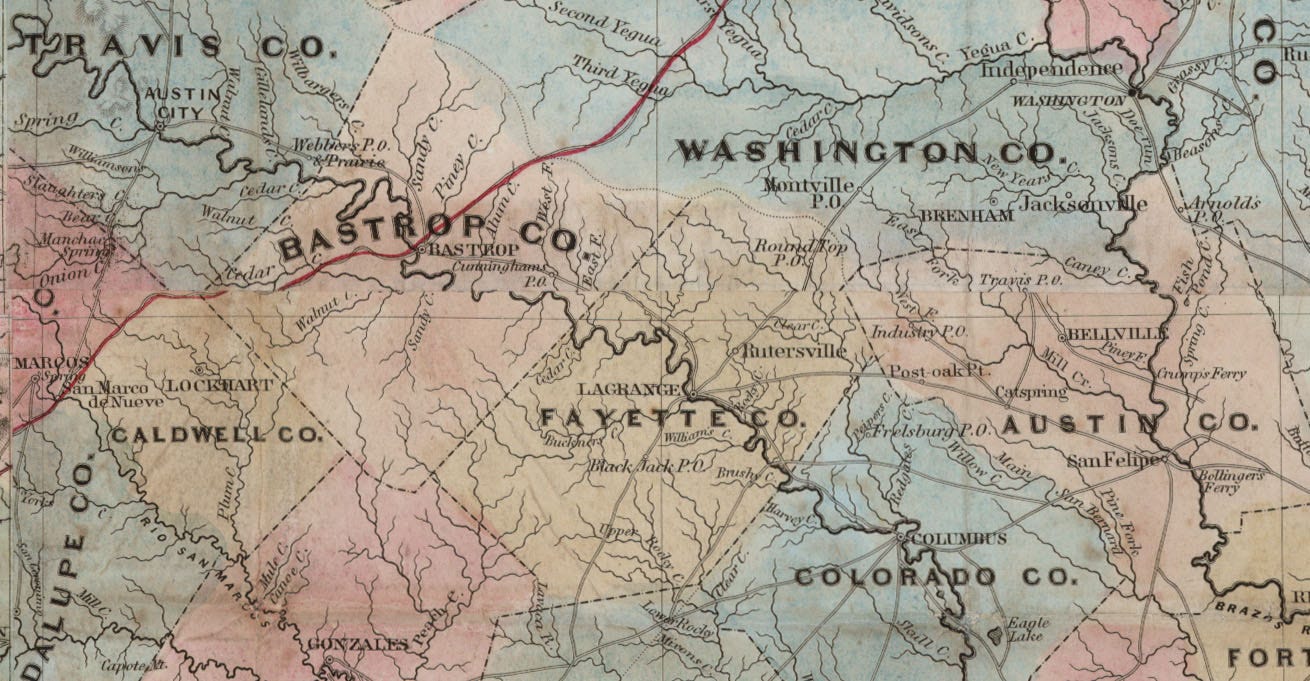
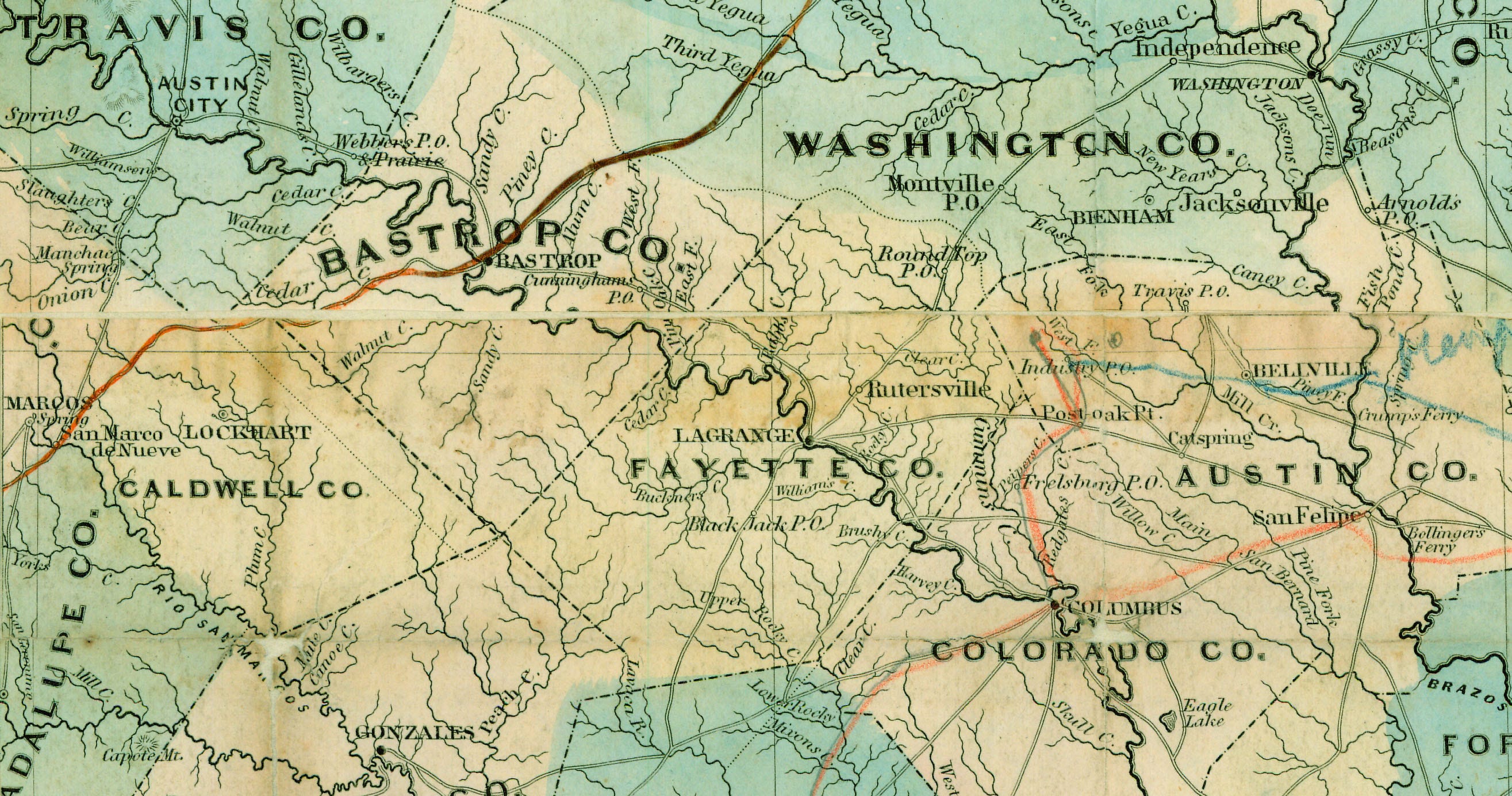
The main body of each map presents the counties of Texas along with their county seats, other major towns, and post offices. Empresario colonies including Mercer's and Fisher and Miller's Colony are labeled. Natural features such as timber and topography are included, and rivers and creeks are drawn throughout. A notation at the left side of the maps endorsed by Land Commissioner Thomas William Ward asserts that "the meanders of the rivers are all correctly represented, being made from actual surveys."
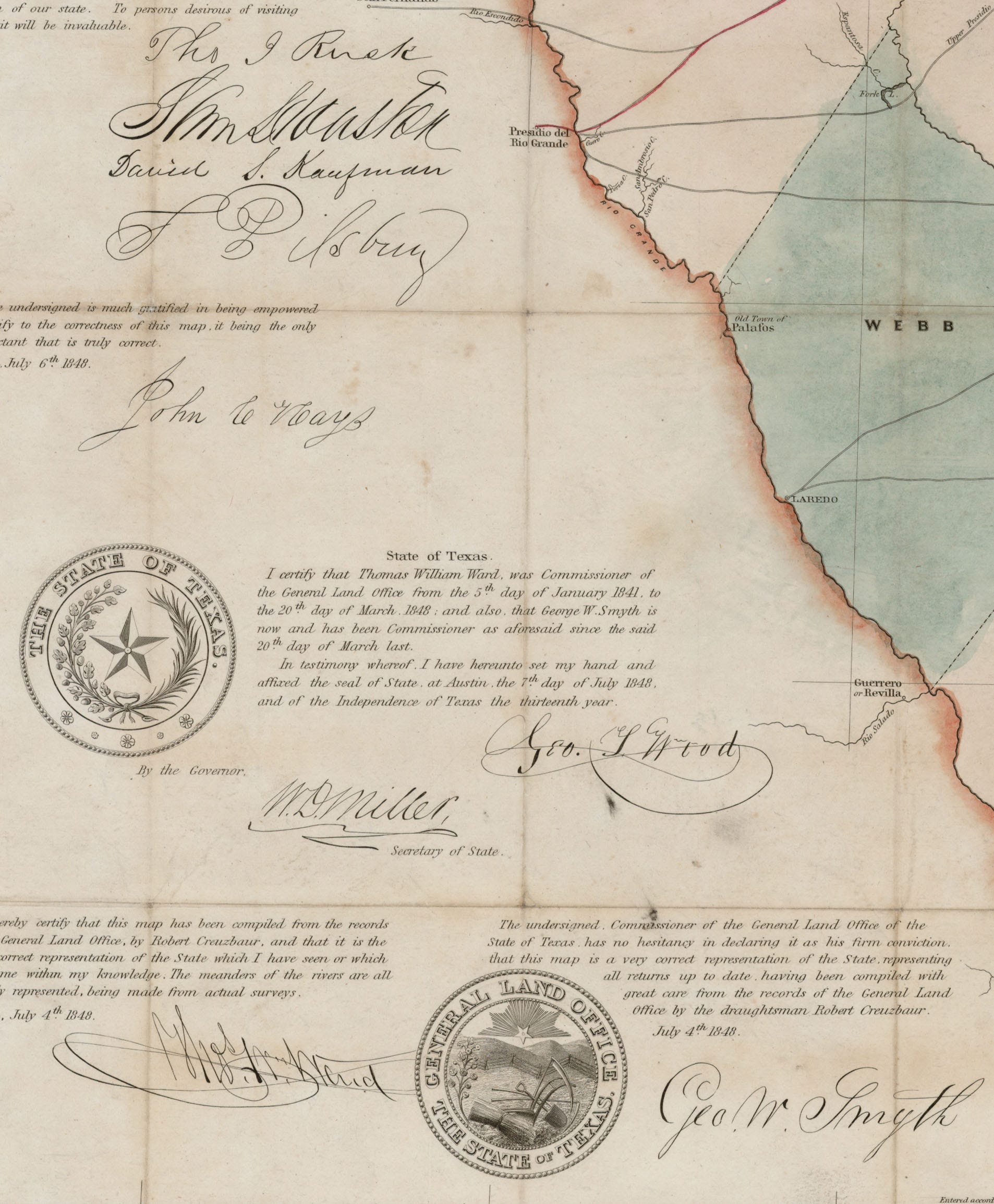
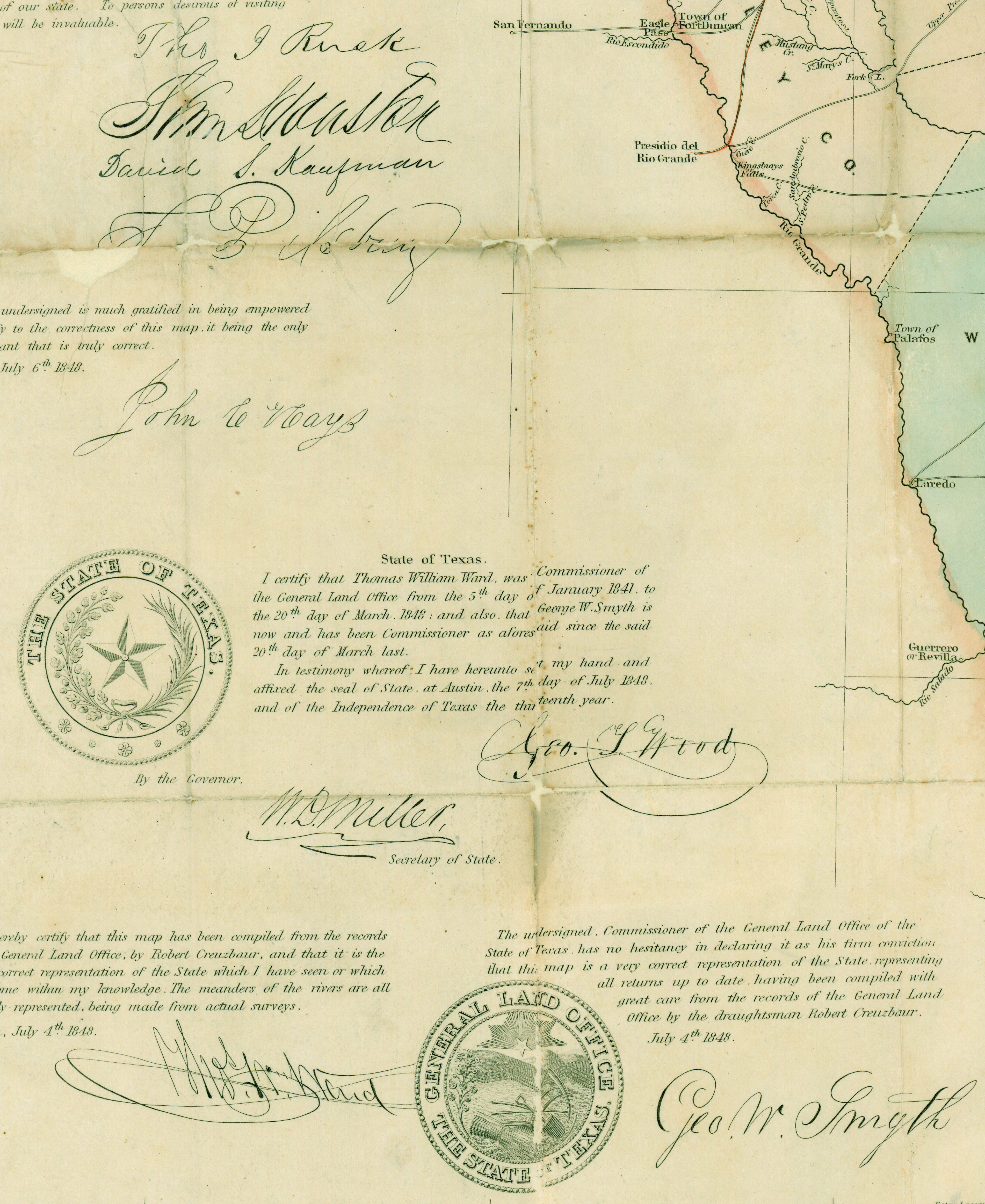
In addition to Ward, numerous other distinguished Texans, many of whose names appear on the maps as county and city names of Texas,[3] are signatories attesting to the quality and accuracy of De Cordova's work.
U.S. Senators Thomas J. Rusk and Sam Houston, and U.S. Congressmen David S. Kaufman and Timothy Pillsbury all sign to certify that "no map could surpass this in accuracy and fidelity." John C. Hays, former Texas Ranger, Mexican War hero, and Texas trailblazer is another signatory. Texas Governor George T. Wood and Secretary of State W.D. Miller also sign attesting that Ward and George W. Smyth were the elected Land Commissioners respectively during the time of the map's initial creation in 1848. Finally, both Land Commissioners attest that De Cordova actually used Land Office records and that the map is a correct representation of the state, and they affix their signatures alongside the seals of the state of Texas and the General Land Office.[4]
Above the signatures, a table provides a reference for the land districts of Texas. These districts, totaling thirty-eight, form an important part of the organization of land records at the GLO Archives.

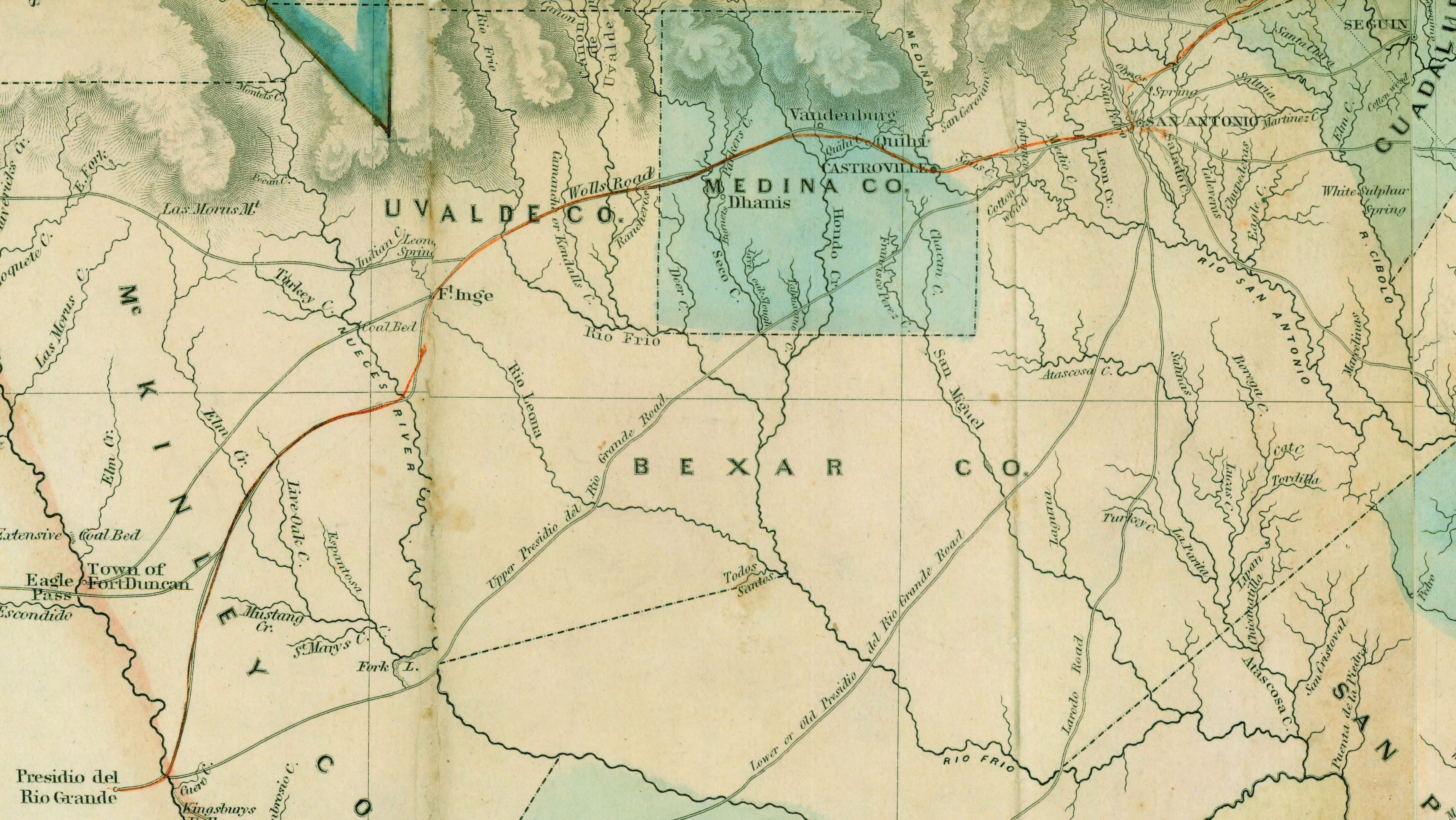
In both editions of the map, the Old San Antonio Road (also known as the Camino Real, the King's Highway) is embellished as it stretches across Texas. The vital network of roads connected the Presidio del Rio Grande to San Antonio and continued through Bastrop, Nacogdoches, Milam, and into Louisiana. The Old San Antonio Road experienced a resurgence during the years of these maps' production, as new settlers came into Texas and others passed through en route to the California gold rush.[5]
The 1849 edition is part of the Frank and Carol Holcomb Digital Map Collection . Conservation of the 1851 edition was funded in 2001 with donations from the Clear Lake Area Chamber of Commerce and Clear Lake and NASA Area Convention and Visitors Bureau.

[1] James C. Martin and Robert Sidney Martin, Maps of Texas and the Southwest, 1513–1900, Albuquerque, NM: Published for the Amon Carter Museum by the University of New Mexico Press, 1984, p. 39.
Handbook of Texas Online, Natalie Ornish, "De Cordova, Jacob Raphael," accessed August 07, 2017, https://tshaonline.org/handbook/online/articles/fde03. Uploaded on June 12, 2010. Modified on May 18, 2016. Published by the Texas State Historical Association.
[2] Handbook of Texas Online, Roger A. Griffin, "Compromise of 1850," accessed August 07, 2017, https://tshaonline.org/handbook/online/articles/nbc02. Uploaded on June 12, 2010. Modified on March 21, 2016. Published by the Texas State Historical Association.
[3] E.g. City of Houston, Houston County, City of Rusk, Rusk County, City of Hays, Hays County, City of Kaufman, Kaufman County, Ward County, and Wood County.
[4] These testimonials, originally dated "Washington City, August 12th, 1848," remained on the map through all editions, though the date was removed from the later editions.
[5] Handbook of Texas Online, "Old San Antonio Road," accessed August 07, 2017, https://tshaonline.org/handbook/online/articles/exo04. Uploaded on June 15, 2010. Published by the Texas State Historical Association.
How To Draw The State Of Texas
Source: https://medium.com/save-texas-history/j-de-cordovas-map-of-the-state-of-texas-310129911483
Posted by: morasuld2000.blogspot.com

0 Response to "How To Draw The State Of Texas"
Post a Comment